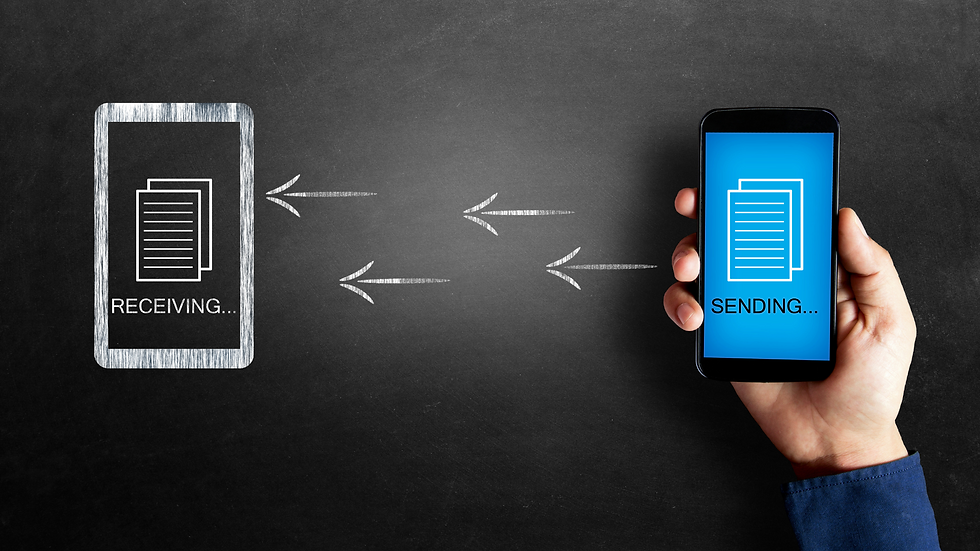A Comprehensive Guide to Essential Team Productivity Tools
- r57408855
- Dec 18, 2023
- 3 min read
In the fast-paced world of business, effective teamwork is crucial for success. Teams that collaborate seamlessly and efficiently are more likely to achieve their goals and drive innovation. To enhance collaboration and streamline workflow, teams are turning to a variety of productivity tools. In this article, we'll explore the landscape of team productivity tools, highlighting their benefits and providing insights into some of the most popular ones.
Project Management Tools
Project management tools serve as the backbone of team collaboration by helping organize tasks, assign responsibilities, and track progress. Platforms like Asana, Trello, and Jira enable teams to create tasks, set deadlines, and visualize project timelines. With features like kanban boards and Gantt charts, these tools offer a holistic view of project status, fostering transparency and accountability.
Communication and Messaging Platforms
Effective communication is the cornerstone of successful teamwork. Messaging platforms such as Slack and Microsoft Teams facilitate real-time communication, allowing team members to exchange ideas, share files, and collaborate effortlessly. Channels and threads help organize discussions, preventing information overload and ensuring that relevant conversations are easily accessible.
Collaboration Suites
Collaboration suites integrate various tools to provide a unified platform for team communication, document sharing, and project management. Google Workspace and Microsoft 365 are prime examples, offering a seamless combination of email, document editing, video conferencing, and more. These suites enhance team productivity by centralizing essential tools in one place, minimizing the need for constant app switching.
Time Tracking and Productivity Analytics
Understanding how time is spent is crucial for optimizing productivity. Time tracking tools like EmpMonitor, Toggl and Harvest enable teams to log their hours, track project timelines, and analyze where time is being allocated. Productivity analytics provide valuable insights into work patterns, helping teams identify bottlenecks and optimize their workflow for maximum efficiency.
File Sharing and Storage
Efficient collaboration requires seamless file-sharing and storage solutions. Cloud-based platforms like Dropbox, Google Drive, and OneDrive empower teams to share, access, and collaborate on documents in real-time. Version control features ensure that everyone is working on the latest iteration, reducing the risk of errors and confusion.
Task Automation Tools
Automation tools help teams streamline repetitive tasks, saving time and reducing manual errors. EmpMonitor, Zapier and Integromat are examples of tools that enable users to create automated workflows by connecting different apps and services. By automating routine processes, teams can focus on more complex and creative aspects of their work.
Virtual Meetings and Video Conferencing
As remote work becomes increasingly common, virtual meetings and video conferencing tools have become essential for team collaboration. Platforms like Zoom, Microsoft Teams, and Google Meet facilitate face-to-face interactions, even when team members gets geographically dispersed. Video conferencing enhances communication and fosters a sense of connection and camaraderie among team members.
Employee Engagement and Recognition Tools
Keeping team members engaged and motivated is crucial for sustained productivity. Employee engagement tools such as Bonusly and TINYpulse provide platforms for recognizing achievements, sharing feedback, and celebrating milestones. These tools contribute to a positive team culture, boosting morale and encouraging a sense of accomplishment.
Learning and Development Platforms
Investing in the professional development of team members is essential for long-term productivity. Learning platforms like Udemy for Business and LinkedIn Learning offer a plethora of courses, tutorials, and resources to help team members acquire new skills and stay updated on industry trends. By fostering continuous learning, teams can adapt to challenges and contribute to organizational growth.
Security and Compliance Tools
In an era of increasing cyber threats, ensuring the security of sensitive data is paramount. Security and compliance tools such as, LastPass and Okta help teams manage passwords, control access to applications, and enforce security policies. These tools play a crucial role in safeguarding confidential information and maintaining regulatory compliance.
You can also watch: EmpMonitor | Best Workplace Productivity With Employee Monitoring Software
Wrapping Up:
In the dynamic landscape of modern business, teams must leverage the power of productivity tools to stay competitive and achieve their goals. From project management and communication to automation and security, the array of available tools is vast and diverse. By carefully selecting and integrating these tools into their workflow, teams can enhance collaboration, streamline processes, and ultimately boost productivity. As technology continues to evolve, staying informed about the latest advancements in team productivity tools will be essential for maintaining a competitive edge in the business world.







Comments